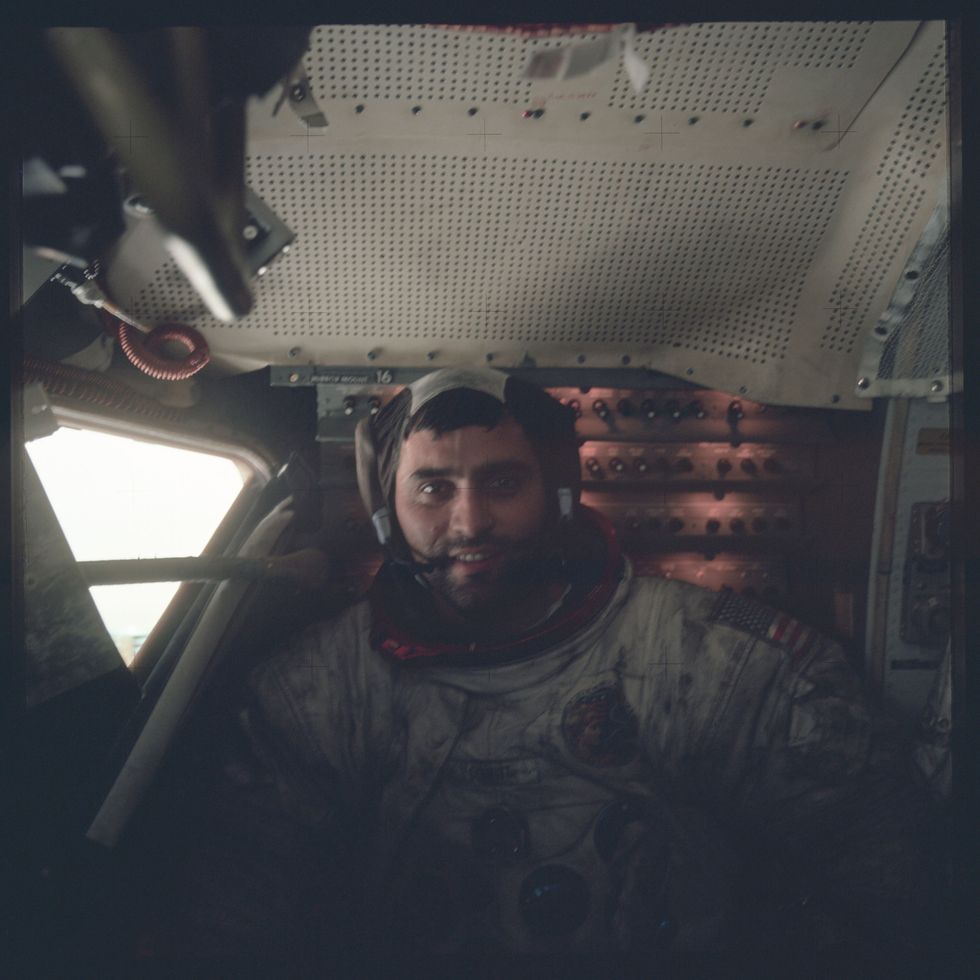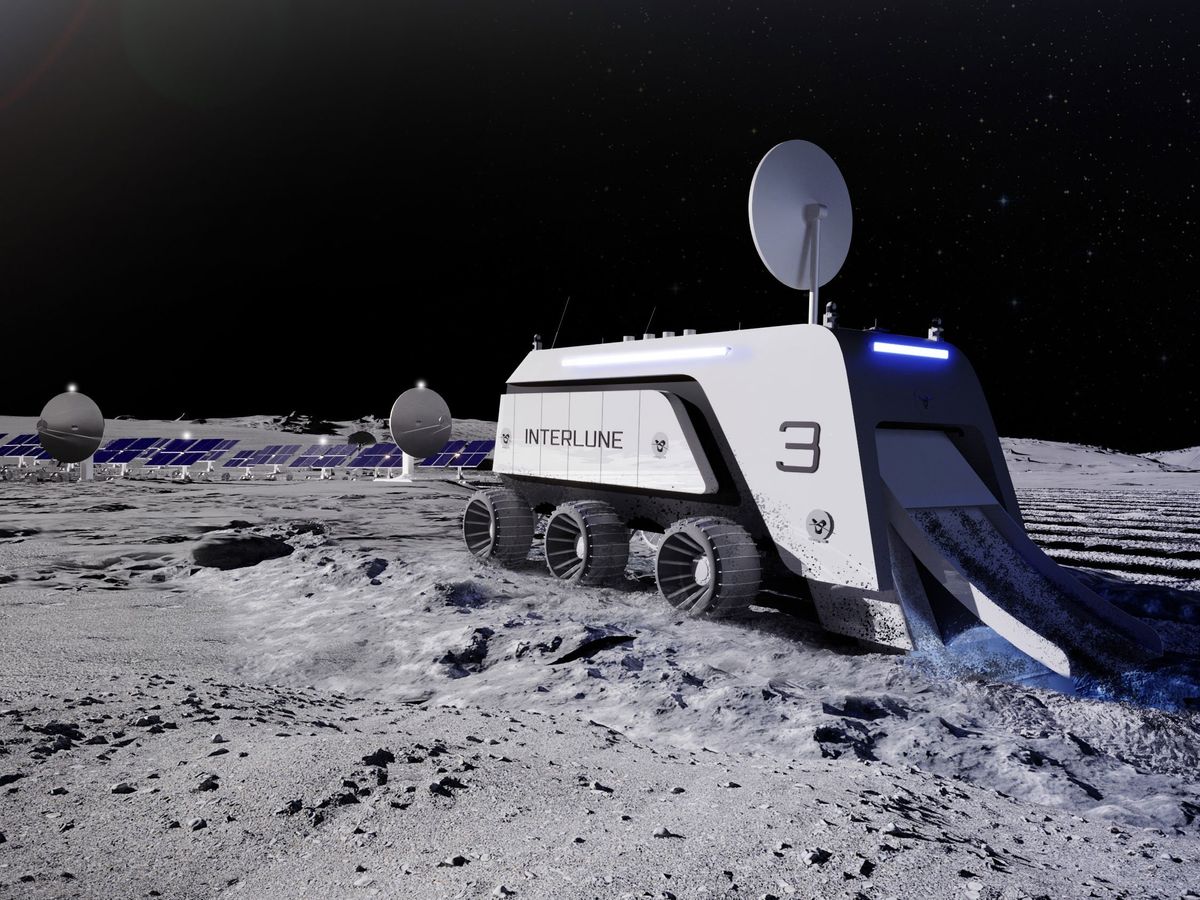When Harrison Schmitt and his crewmate Gene Cernan finished their last moonwalk, they were filthy. Never mind that Apollo 17 wasn’t large enough for basic creature comforts; the bigger issue was that their spacesuits were covered with caustic, corrosive lunar dust. It was like nothing on Earth. It got into everything. For lack of air or water erosion, the specks of dirt were sharper than broken glass. NASA worried it could threaten the astronauts. But Schmitt, the only professional geologist ever to walk on the moon, would come to believe over the years that the dust might have great value—not just scientifically but for all of humanity.
Apollo 17 flew in 1972. Now, after decades of research, analysis, debate, and a fair amount of lobbying, Schmitt is having a new moment in the sun. On 13 March, a startup called Interlune announced that it hopes to mine the lunar regolith for helium-3. Schmitt is the company’s co-founder and executive chairman.
Helium-3 (or He-3) is a stable isotope of ordinary helium, useful in myriad ways on Earth. It is used in neutron detectors that can detect smuggled nuclear material and weapons at ports and border crossings. It can be valuable in quantum computing to provide the cryogenic cooling—down almost to absolute zero—needed to reduce interference in quantum computers’ calculations. It’s important in medical imaging (especially for lung diseases), where it powers high-resolution MRIs while giving off less radiation than other imaging technologies. Perhaps most tantalizing but also hardest to achieve, He-3 could someday be a fuel for nuclear fusion reactors, providing abundant clean energy without radioactive waste.
“I think what separates them is that they’re focused on resources which are useful in the current Earth economy on Earth.” —Chris Lewicki, Planetary Resources (former)
“If helium-3 were abundant on Earth, all these benefits would be with us today,” said Schmitt in emailed comments to IEEE Spectrum. But it’s not. Helium-3 is part of the solar wind that shoots outward from the sun, but it never reaches Earth’s surface because of the planet’s magnetic field. The primary source of helium-3 here on the ground is the decay of tritium—artificially made hydrogen—from nuclear weapons and power plants. There’s not very much of it, and it’s prohibitively expensive to make or collect.

So why not look to the moon? It’s been bombarded by solar wind for eons, and it doesn’t have a meaningful magnetosphere or atmosphere to prevent all that helium (and other elements) from bonding with its soil.
In 1986, Schmitt became a consultant to the Fusion Technology Institute at the University of Wisconsin, and began a long working relationship with Gerald Kulcinski, a professor of nuclear engineering and the institute’s director. Kulcinski and colleagues calculated that “over the 4 billion year history of the moon, some 500 million metric tonnes of [helium-3] hit the surface of the moon from the solar wind.”
By 1995, Schmitt was lead author of a proposal to NASA for a lunar rover mission called Interlune-One, intended to probe the regolith for possible resources. It never flew. In 2006 he published a book, Return to the Moon, in which he said settling there could be “historically comparable to the movement of our species out of Africa about 150,000 years ago.” Response was muted. But he kept at it, recruiting investors and space entrepreneurs such as Rob Meyerson, a former president of Jeff Bezos’ Blue Origin company and who is now Interlune’s CEO.
Interlune says standard industrial processes from Earth could be used to separate He-3, and other compounds, from the top layers of lunar regolith. It proposes a solar-powered “harvester,” with prototypes to be tried first on Earth and then on the moon, to sort pieces of lunar regolith by size and extract the desired elements from it. If everything goes well, the company says revenue-generating operations could begin in the 2030s.
“We’ve done our studies, we’ve talked to customers, and we have customers lined up in the quantum computing market that want to buy helium-3 today,” says Meyerson. “We of course can’t sell it to them because we’re not on the moon today. But someday very soon we’ll be able to serve that customer.”
What will Interlune’s harvester look like? Meyerson says to picture a solar-powered robotic vehicle on the moon that’s seven meters long and equipped to dig a trench two meters deep, scoop up the dirt, and separate the He-3 found in it. The vehicle would carry the gaseous helium to a waiting spacecraft which would carry it to Earth. A useful load, Meyerson says, would be in the “tens of kilograms.”
“We have customers lined up in the quantum computing market that want to buy helium-3 today.” —Rob Meyerson, Interlune
Seattle-based Interlune reports that it has raised US $18 million in seed funding, which may not sound like much in the high-cost world of space exploration (Intuitive Machines’ moon landing this year cost more than $100 million). But remember, says Meyerson, that companies like Intuitive Machines, Astrobotic, SpaceX and Blue Origin are building rockets and moon landers that Interlune could someday hire. That lets it concentrate on its helium-mining business—and if it can extract He-3 from lunar regolith, it can also collect hydrogen or oxygen that its spacefaring partners may want to buy.
Can this work, both technologically and as a business? Chris Lewicki, who previously headed the asteroid-mining startup Planetary Resources, says he is not involved with Interlune but thinks it’s different from other companies. While NASA and many researchers and companies have talked for years about harvesting water ice near the moon’s south pole, their aim is to use that water in space. The people at Interlune, in contrast, are trying to build a business bringing He-3 back home.
“I think what separates them is that they’re focused on resources which are useful in the current Earth economy on Earth,” Lewicki says.
Harrison Schmitt, now 88, says, “I have never been more encouraged about helium-3’s broad availability becoming a reality.” He adds, “The momentum for a private sector initiative has reached a critical mass.”
Ned Potter is a New York writer who spent more than 25 years as an ABC News and CBS News correspondent covering science, technology, space, and the environment.


